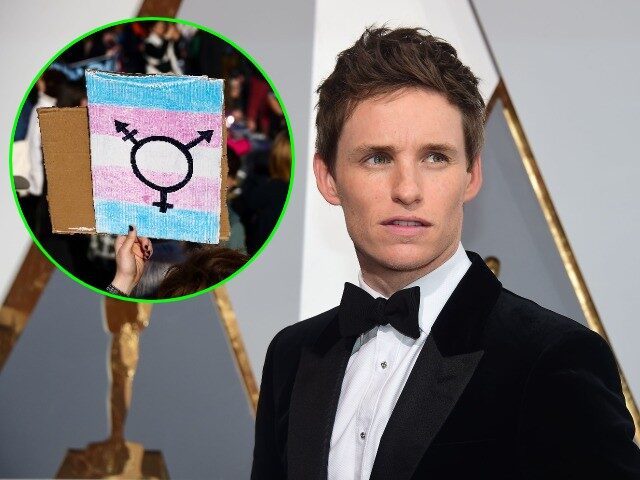Every totalitarian movement needs its Orwellian euphemisms, and Big Trans is no exception. Case in point: “gender confirmation” and “gender affirmation,” which are now ubiquitous in the media. Even Wikipedia automatically directs searches for “sex change operation” to the page for “gender-affirming surgery.” Where did these newspeak terms come from? And how did they take root and spread so quickly?
You can thank the Academy Awards.
At the 2016 Oscars ceremony, Eddie Redmayne was nominated for best actor for his role in The Danish Girl, in which he played 20th-century painter Einar Wegener, a man who undergoes a sex change operation to become a “woman” named Lili Elbe. In presenting the best actor category, Julianne Moore described Redmayne’s character as “one of the first people to undergo gender confirmation surgery.”
Redmayne lost to Leonardo DiCaprio for The Revenant that evening, but no matter: the precedent was established.
Watch below:
As fleeting as it was, Moore’s invocation of “gender confirmation” to more than 34 million viewers proved to be the super-spreader event that Big Trans needed for its new lexicon. Prior to that, instances of the term’s usage in the mainstream media were rare and usually confined to quotes from activists or certain members of the medical field.
Post-Oscars, the terminology suddenly took off, working its way into the stylebooks of major news outlets and becoming the approved lingo when referring to transgender medical procedures including hormone therapy, vaginoplasties, and “top surgery,” or breast removal.
Newsweek recently used the term “gender-affirming” to describe the types of medication that transgender Nashville shooter Audrey Hale might have taken prior to killing six people, including three children, at a Christian school. The once-venerated Scientific American ran the following headline last year: “What the Science on Gender-Affirming Care for Transgender Kids Really Shows.”
The New York Times began using “gender confirmation” and “gender affirmation” in mid-2016, after the Oscars, a search of the paper’s archives shows. The same goes for The Washington Post, whose first use of the terms was in a profile of transgender surgeon Marci Bowers in April 2016, just two months after the Oscars.
The Gay & Lesbian Alliance Against Defamation (GLAAD) officially adopted “gender confirmation” in the 10th edition of its Media Reference Guide, which was published in October 2016.
Most significantly, The Associated Press entered the term into its influential stylebook the following year, making the terminology official not just for numerous publications around the country but also for many schools and universities that follow the organization’s lead.
“For medical procedures often but not always used for a transition, say sex reassignment or gender confirmation,” the AP said.
For medical procedures often but not always used for a transition, say sex reassignment or gender confirmation. #APStyleChat (2/2)
— APStylebook (@APStylebook) October 10, 2017
LGBTQ publications have been using the terms for longer. The Advocate appears to have first used “gender affirmation” in 2012, though the term was used earlier in reader letters published by the magazine.
One of the first popularizers of the term “gender confirmation” was sex-change surgeon Dr. Loren Schechter, who wrote a 2012 blog entry for The Huffington Post with the headline “‘Gender Confirmation Surgery’: What’s in a Name,” in which he encouraged people to drop the phrase “sex change operation” in favor of something more “accurate.”
Another was sex change specialist Dr. Scott Mosser, who opened the Gender Confirmation Center in San Francisco in 2013. The center used to provide surgery for adolescent patients under 18 but recently had to stop due to “threats.”
“A sobering consequence of that visibility is that we have become a target of anti-trans, anti-science extremists,” Mosser said on the center’s official site. “In August of 2022, our practice began receiving an overwhelming number of violent threats directed at our patients, office team and surgical centers. To date, the threats have exclusively targeted our adolescent surgical care.”
The origin of “gender confirmation” appears to be in clinical papers about gender dysphoria patients dating as far back as the late 80s. A must-read thread on Stack Exchange located a 1988 paper titled “Vaginoplasty for Gender Confirmation” in the publication Clinics In Plastic Surgery.
This article was subsequently cited by several other journals, giving the term currency in the larger medical community. A 1989 book titled Current Therapy in Plastic and Reconstructive Surgery quotes a specialist saying, “We deal with gender confirmation surgery, not sex-change surgery.”
Like social contagion, the terminology then worked its way from the medical field to the world of LGBTQ activism. In a series of reader letters and responses published in The Advocate in 1995, a physician wrote: “It is clearly essential that this movement must include specific proposals to protect the right of transsexuals to have access to hormones and gender-confirmation surgery.”
Two decades later, Julianne Moore’s appearance at the Oscars cemented trans newspeak as our official language.
Follow David Ng on Twitter @HeyItsDavidNg. Have a tip? Contact me at dng@breitbart.com

COMMENTS
Please let us know if you're having issues with commenting.